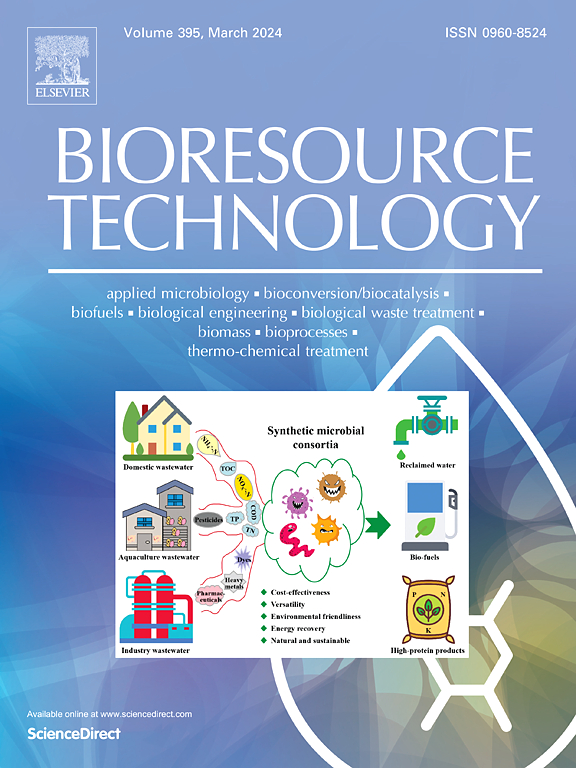Dinitrogen fixation by open purple non-sulfur bacteria cultures for protein production: Diazotrophy boosts photoheterotrophic uptake rates
IF 9.7
1区 环境科学与生态学
Q1 AGRICULTURAL ENGINEERING
引用次数: 0
Abstract
Purple non-sulfur bacteria (PNSB) offer a sustainable alternative to current inefficient protein production systems thanks to their high yields. This study explored the potential of specialized diazotrophic PNSB open cultures for protein production, benchmarking their performance against ammonium-grown PNSB and other diazotrophs. While diazotrophic yields (0.85–0.93 gCODbiomass·gCODsubstrate-1; COD being chemical oxygen demand) were slightly lower than non-diazotrophic (∼1.0), they were over double those of heterotrophic-diazotrophic rhizobacteria, with full N recovery as biomass (∼1.0 gNbiomass·gNfixed-1). Photoheterotrophic-diazotrophic uptake rates were the fastest ever reported for PNSB and any other diazotroph (e.g., 5.20 ± 0.83 vs. 2.64 ± 0.34 gCODsubstrate·gCODbiomass-1·d-1 for PNSB on NH4+). Optimal rates required high light intensities, aligning with diazotrophic energy demands. Photoheterotrophic-diazotrophic conditions were highly selective, enriching a specialized Rhodopseudomonas palustris strain. Biomass protein contents and essential amino acid metrics confirmed nutritional suitability for humans. This work lays the background for exploiting PNSB’s potential to address global protein demands through sustainable nitrogen fixation.

求助全文
约1分钟内获得全文
求助全文
来源期刊

Bioresource Technology
工程技术-能源与燃料
CiteScore
20.80
自引率
19.30%
发文量
2013
审稿时长
12 days
期刊介绍:
Bioresource Technology publishes original articles, review articles, case studies, and short communications covering the fundamentals, applications, and management of bioresource technology. The journal seeks to advance and disseminate knowledge across various areas related to biomass, biological waste treatment, bioenergy, biotransformations, bioresource systems analysis, and associated conversion or production technologies.
Topics include:
• Biofuels: liquid and gaseous biofuels production, modeling and economics
• Bioprocesses and bioproducts: biocatalysis and fermentations
• Biomass and feedstocks utilization: bioconversion of agro-industrial residues
• Environmental protection: biological waste treatment
• Thermochemical conversion of biomass: combustion, pyrolysis, gasification, catalysis.
 求助内容:
求助内容: 应助结果提醒方式:
应助结果提醒方式:


